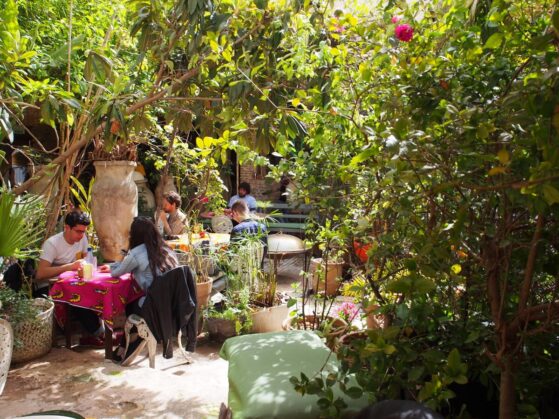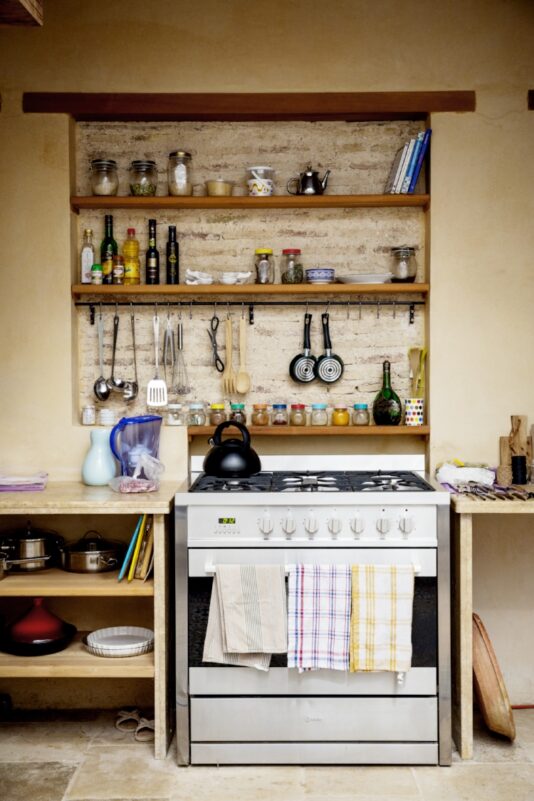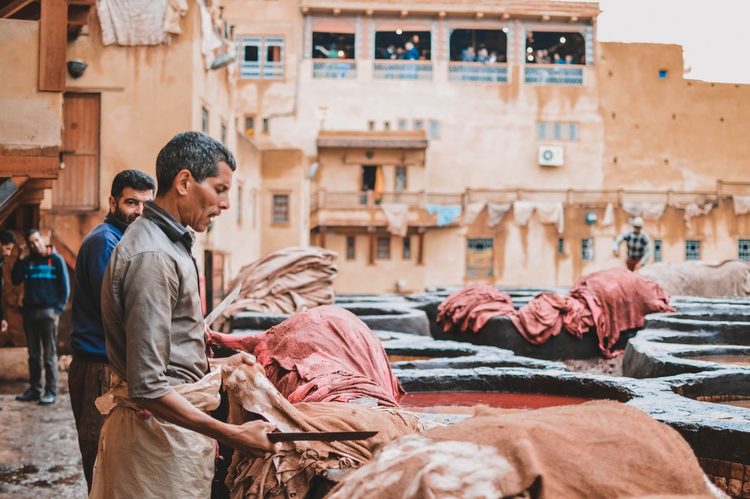Fez (Fes), Morocco is famous for its ancient walled city, which many compare to the old walled city of Jerusalem. It is the first of Morocco’s imperial cities, dating back to the eighth century. The city is also a pioneer within the Muslim cult and has one of the oldest universities in the world. All these firsts make Fez particularly attractive with a lively and influential culture. Fez has the best-preserved Medina in the Arab world. The vast and labyrinthine Medina of Fez el-Bali is also said to be the world’s largest urban area with no traffic cars. Donkeys, carriages, and motorcycles provide the transportation. This ancient city is one of the most exciting and attractive destinations in North Africa, and it is perhaps somewhat overshadowed by the more famous cities of Casablanca, Marrakech, and Rabat.
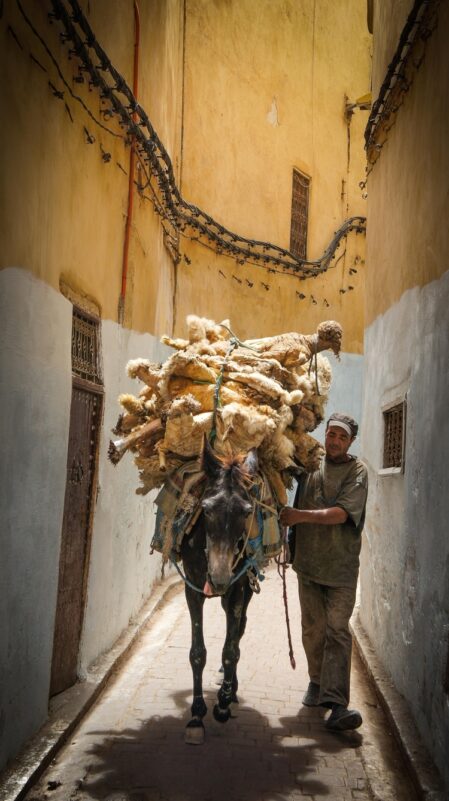
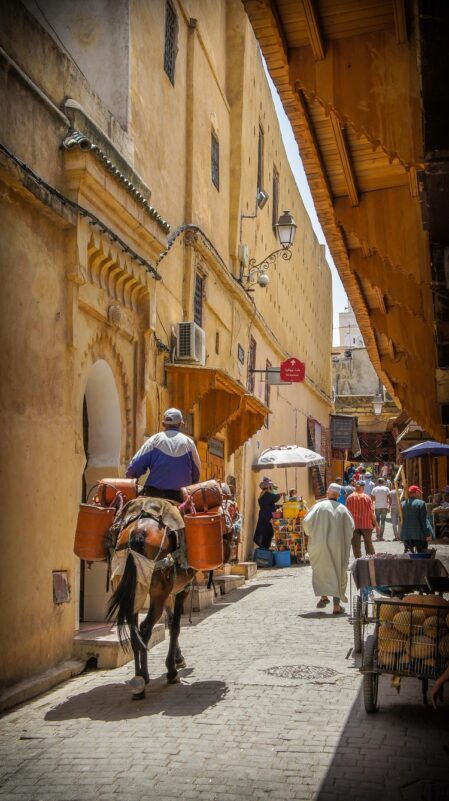
The entire Medina has been designated a Unesco World Heritage of Humanity Site, so expect an array of beautiful sights, smells and sounds. Wander through Fez’s souks and alleys, unchanged since the Middle Ages. The people have advanced with the modern era, but the ancient traditions are still practised daily in Medina.
Your exploration of the Medina should begin at the Bab Boujlloud Gate. The initial monument to the sojourn is the vast Bou Inania medersa, with its cedar woodwork, sculptured stucco, marble, and onyx decoration. If you love craftsmanship, you will be in awe as the locals have the knacker and tenderness to create things from scratch. As you advance along Talaa Kebira Street (watch for the clumsy steps), you will particularly admire the Tijani zaouïa (zaouïa, sanctuary of a religious brotherhood) and the instrument makers’ souk before arriving at the Mzara (shrine) of the ancient sovereign Moulay Idriss located at the place where he made the decision to build the town. Once you have passed the babouche vendors, you arrive in Nejjarine Square and the cabinetmakers’ souk, in addition to the magnificently carved foundouk (caravanserai) on the square houses of the Museum of Wooden Arts and Crafts. The kissaria (covered market), is the blooming ecstasy where jewellery and fine fabrics are on sale (closed when the sun sets). Next to it, you can admire Fez’s most visited and revered attraction: the Zaouïa (shrine) of Moulay Idriss.
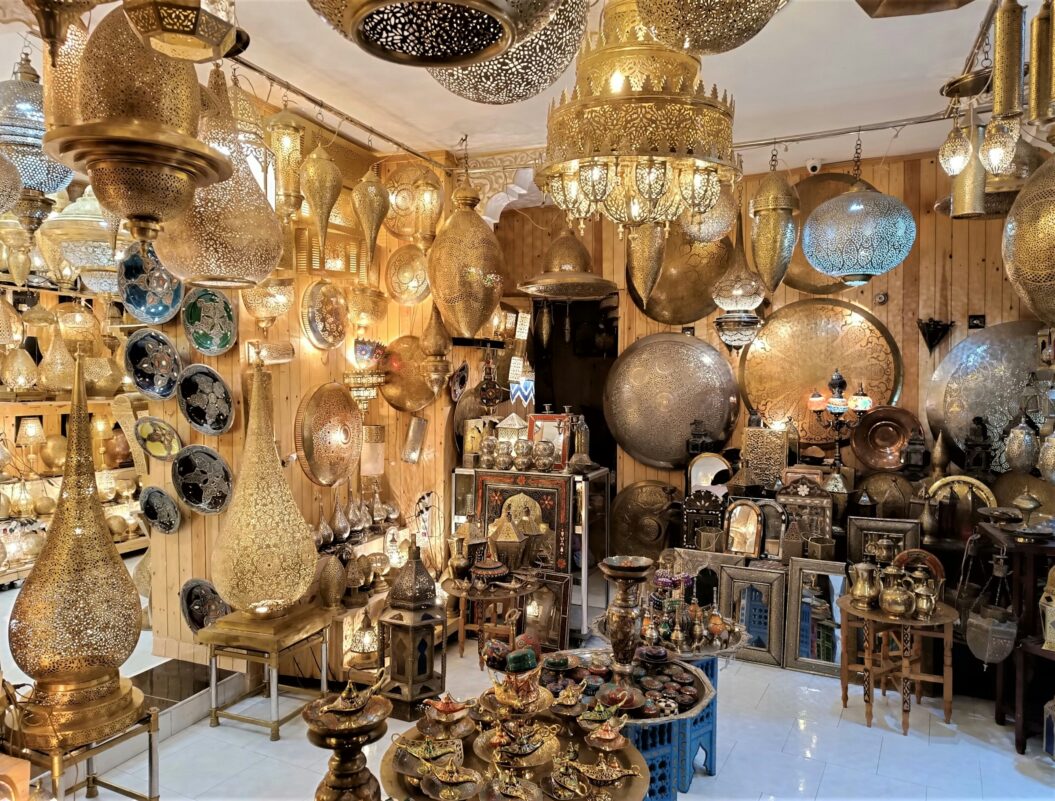
For a superb shopping service and great options, we recommend visiting Chez Anass at his Wonders of African Art shop on Chrablién nº58. Talâa Kebira for authentic jewellery, crafts, and items from all over Africa. For potteries and Berber rugs, we recommend heading to Lajaj Ali’s shop called Fabrication de Poterie et de Tapis berbère et Percussions on Derb El Horra Talaa Sghira nº23. He even holds the celebratory rugs for weddings and family parties.
Fez has so much to offer, we recommend booking a tour with Plan-It Morocco. We personally enjoyed a road trip through the former Roman city Volubilis (UNESCO World Heritage) and ended up having lunch at Walila farm in the middle of the countryside. We also learned to bake bread and make briwates, almond m´hanncha and other finger-licking sweets in a family’s home. It gave us a chance to mingle with a family and learn about their customs in addition to making local food. A very important factor that we learned with our guide was the difference between the old and new tanneries, the famous cobalt blue that symbolizes the ceramics of this imperial city and the natural processes that go with tanning.
The process of tanning goes something like this: 1. Piles of hides are ready for dyeing. 2. Soaked in diluted acidic pigeon excrement to soften hide. 3. Soaked in vegetable dye nº1 henna, saffron and mint. 4. Soaked in vegetable dye nº2 henna, saffron and mint again. 5. Hides are left to dry. 6. Hides are cut to pattern 7. Hides are stitched to produce a final product. The views above the shops where you can see the tannery are amazing. The workers stand in the stone vessels arranged like honeycombs, filled with different dyes.
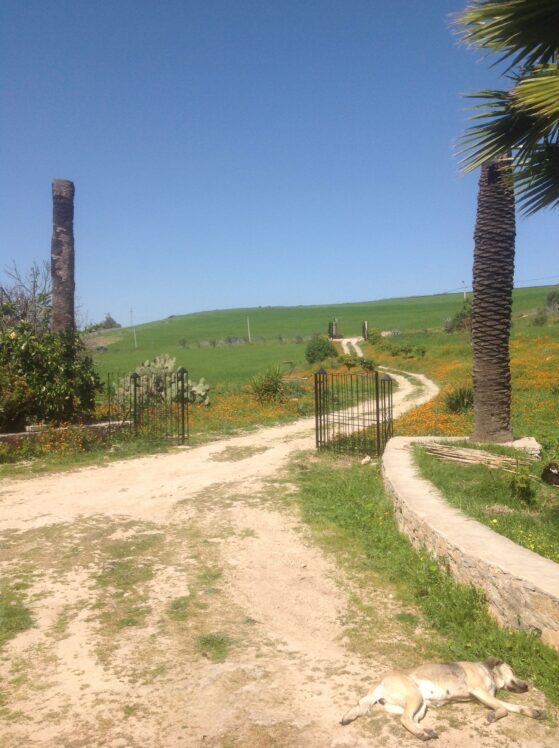
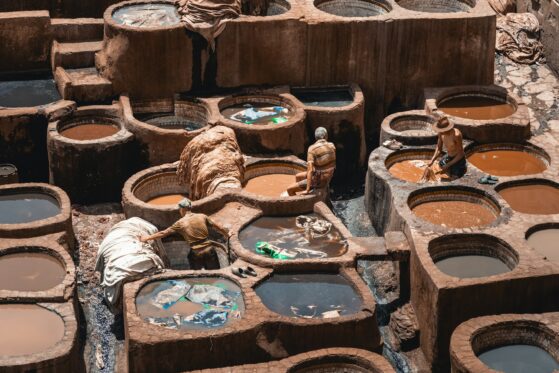
We also walked through the streets of Fez-Jdid, which houses the Royal Palace, the Mellah (Jewish ghetto) and the oldest mosque in Fez. From the rooftop terrace of Le Souk Artisanale Fès (Labtatha n°43 Bis Fès al Jadid) near the Restaurant Café La Noria you have panoramic views of the city.
The first night we stayed in the old city, we opted to stay indoors with dinner reservations already made in advance at boutique property Dar Roumana. The food at the dar is impressive, blending French cuisine with Moroccan flavours. The property is quiet, with only five romantic suites in a traditional Moroccan dar with stylish touches and framed by lush olive groves. You can quickly feel settled in immediately, as the hospitality is excellent. Another one of our favourite stays in Fez is Palais Amani. From the courtyard, the property looks quite large, given that it is divided into three floors, with an additional underground hamman, which we recommend. The property hosts 15 palatial rooms and plenty of outdoor spaces to unwind and relax while sipping on mint tea. 5-star luxury property Hotel Sahrai is the first hotel in Morocco with a Givenchy Spa. This boutique hotel is great if you want to be outside the city centre and enjoy many facilities such as a panoramic infinity pool, tennis court, gym, traditional hammam, and two restaurants (choose between Moroccan and French cuisine).
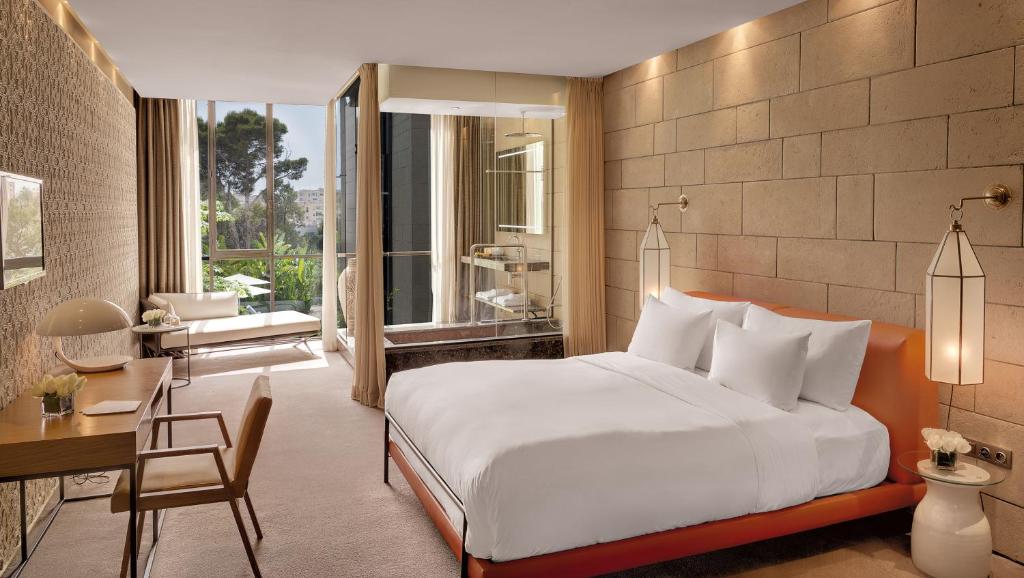
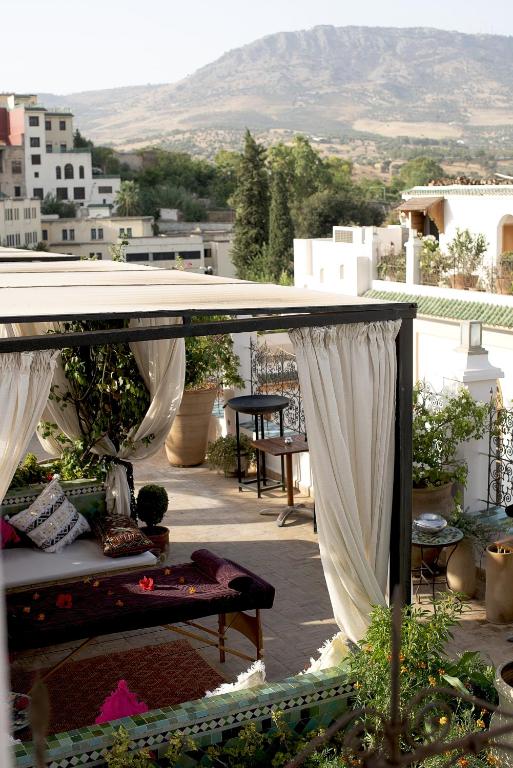
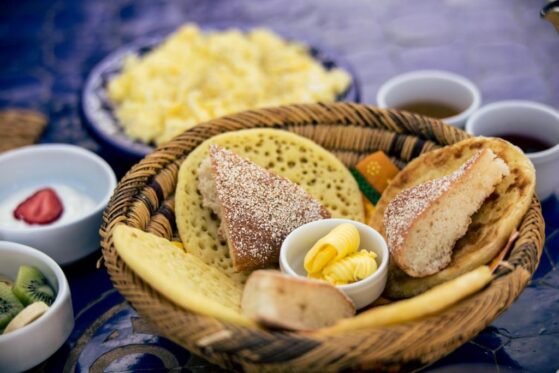
The Medina in Fez has an abundance of contemporary culture. Café Clock hosts poetry slam, live music, language exchanges and great food all under one roof. The upstairs terrace overlooks the historical water clock Dar al-Magana and is a tranquil setting for sipping on a fresh mint lemonade while resting your feet from all of the walking in the ancient city. We met a British expat who lives in the city’s heart, Robert, who happens to co-own Riad Idrissy. We had the chance to eat several times at his in-house restaurant, The Ruined Garden, which came after the riad concept was established. They offer cooking classes if you book in advance, which are taught in French, Arabic or English. We highly recommend it as a chef can show you how they traditionally hand-roll their cous cous and give you ideas on the best ingredients to mix it. Our favourite plate to order in The Ruined Garden was the daghmira, a spiced onion tart with a side of fresh Moroccan salads and freshly squeezed pomegranate juice to wash it all down. Expat Tara Stevens from Dar Namir also hosts cooking classes at her property. Born in Wales, but lived in Spain, Denmark and Puerto Rico, she shares her inspirations from her travels and is a top fan of Mediterranean cuisine.
Fashion director Stephen di Renza is the owner of Nur Restaurant, which is a part of boutique property Riad nº9. The property is decorated with Italian and Japanese frames, with hints of ancient Andalusian artistic heritage in the fountain and walls. Treat yourself to a dinner here, as it is unique compared to any other dining experience in the Medina because of its minimalist design setting and international food. Expect fusion dishes with Moroccan dishes and international touches.
We have compiled here a list of the best restaurants in Fez.
